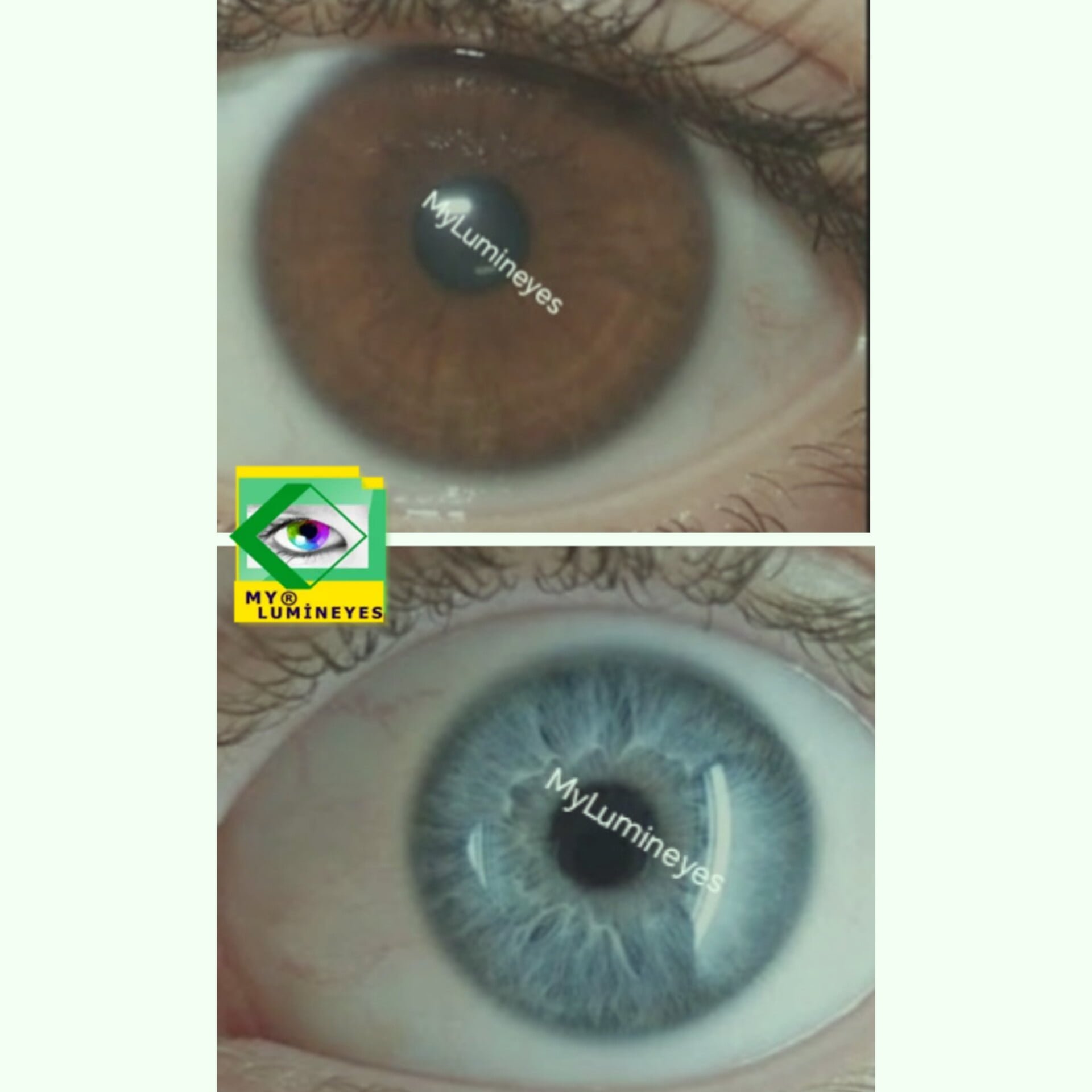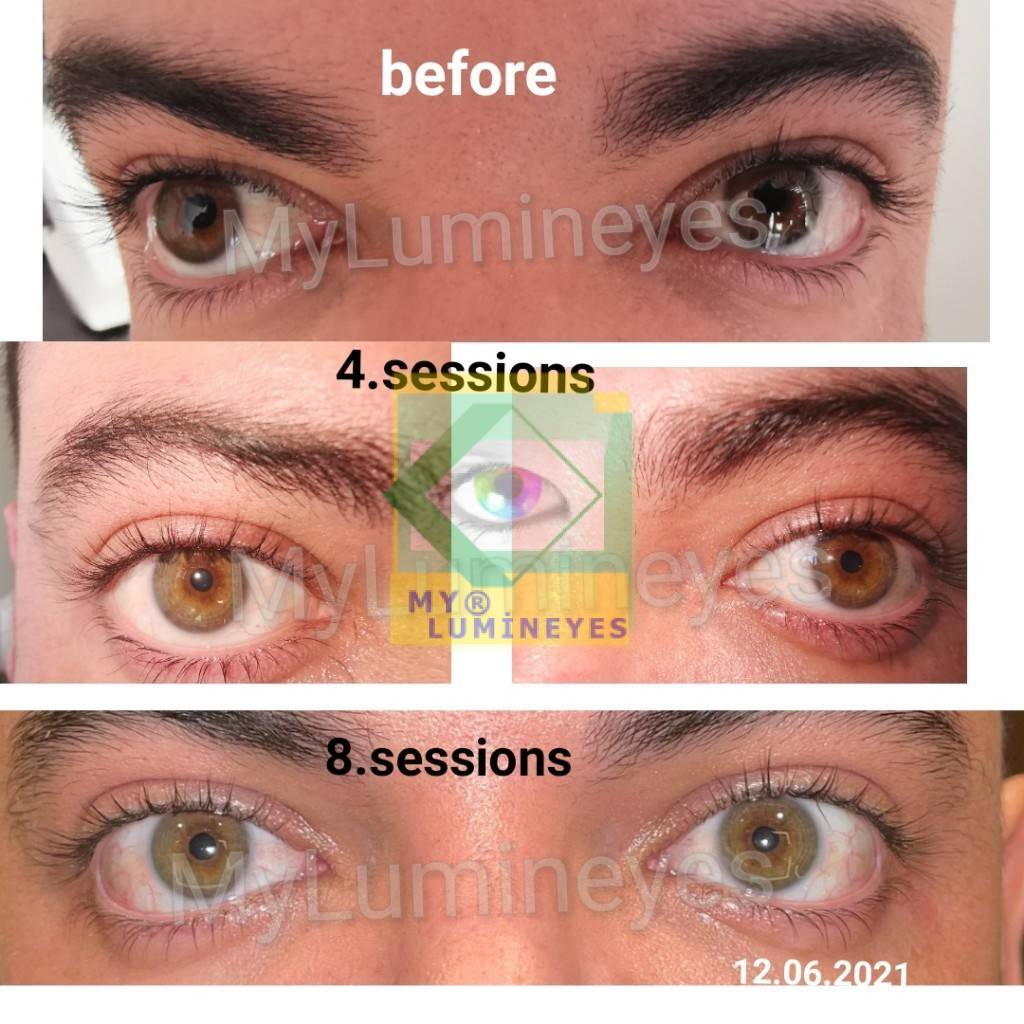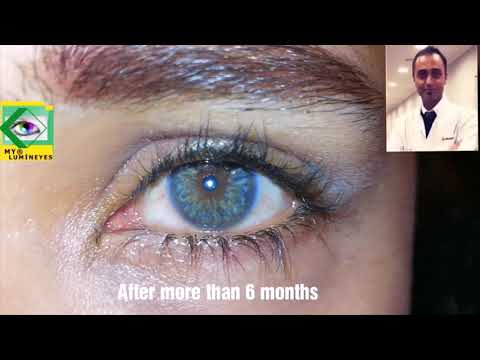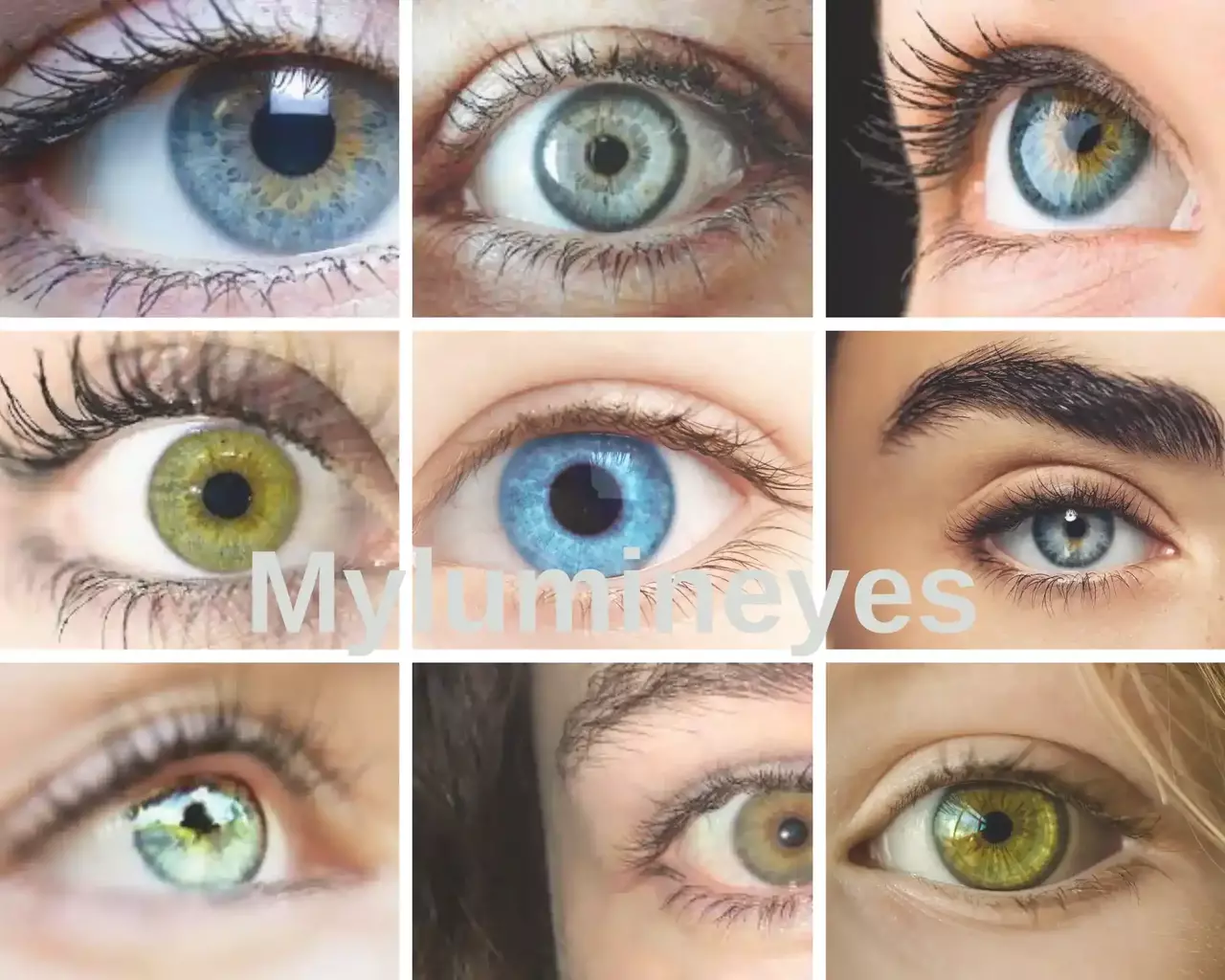How to Change Eye Color with Laser—Safe, Natural & Permanent
Your eye color may be changed in three main methods. Usually the three techniques used for changing eye color are iris implantation, laser eye color change surgery, and keratopigmentation. You can change the iris’s pigment from brown to green, blue, gray, or any other desired color. Each of the three techniques will result in distinctly different outcomes. It is claimed that the only method that is both non-invasive and able to produce results that are exactly like natural eye colors is the procedure known as Lumineyes, or laser eye color change.
About changing the color of your eyes, Dr. Mete offers the following information: We can categorize changes in eye color into natural and unnatural, surgical and non-surgical techniques.

There are two surgical options if you want to permanently change the color of your eyes: keratopigmentation and iris implantation. Even if you are not interested in surgery, there are two alternative options available for changing the color of your eyes: first, “colored contact lenses,” and second, a “laser procedure to change the color of your eyes.” Among all the techniques accessible, only the one involving lasers generates a completely natural eye color change.
Millions are unhappy with their natural eye color. For some, it’s aesthetic. For others, it’s emotional confidence. With today’s medical laser technology, natural eye color change is now possible — safely and permanently.
Laser vs Other Eye Color Change Methods
| Method | Type | Permanent | Natural Look | Risk |
|---|---|---|---|---|
| Lumineyes Laser | Non-surgical |  |  |  Very Low Very Low |
| Keratopigmentation | Surgical |  |  |  Moderate Moderate |
| Iris Implants | Surgical |  |  |  High High |
| Colored Contacts | Non-surgical |  |  |  Low Low |
How Does the Lumineyes Laser Work?
The laser uses a specific wavelength to break down the melanin pigment in the iris. Your genetic structure reveals lighter colors like blue, green, or gray as the pigment fades. There are no cuts, no recovery time, and no foreign material in your eyes during this procedure.
The number of people choosing surgical treatments to change eye color has clearly increased recently.
Artificial iris implants or keratopigmentation treatments are two surgical procedures used to change eye color. While many may view this as a harmless cosmetic adjustment, others have voiced concerns about the long-term effects and safety of eye color-changing procedures. People who support changing eye color surgeries say that getting it is a personal choice that could boost confidence. However, critics caution about the possible hazards linked to this operation, such as contracting infections, experiencing deteriorated vision, or even complete loss of sight.
Laser Procedure
The Lumineyes laser targets the iris pigment to safely reveal a lighter eye color.
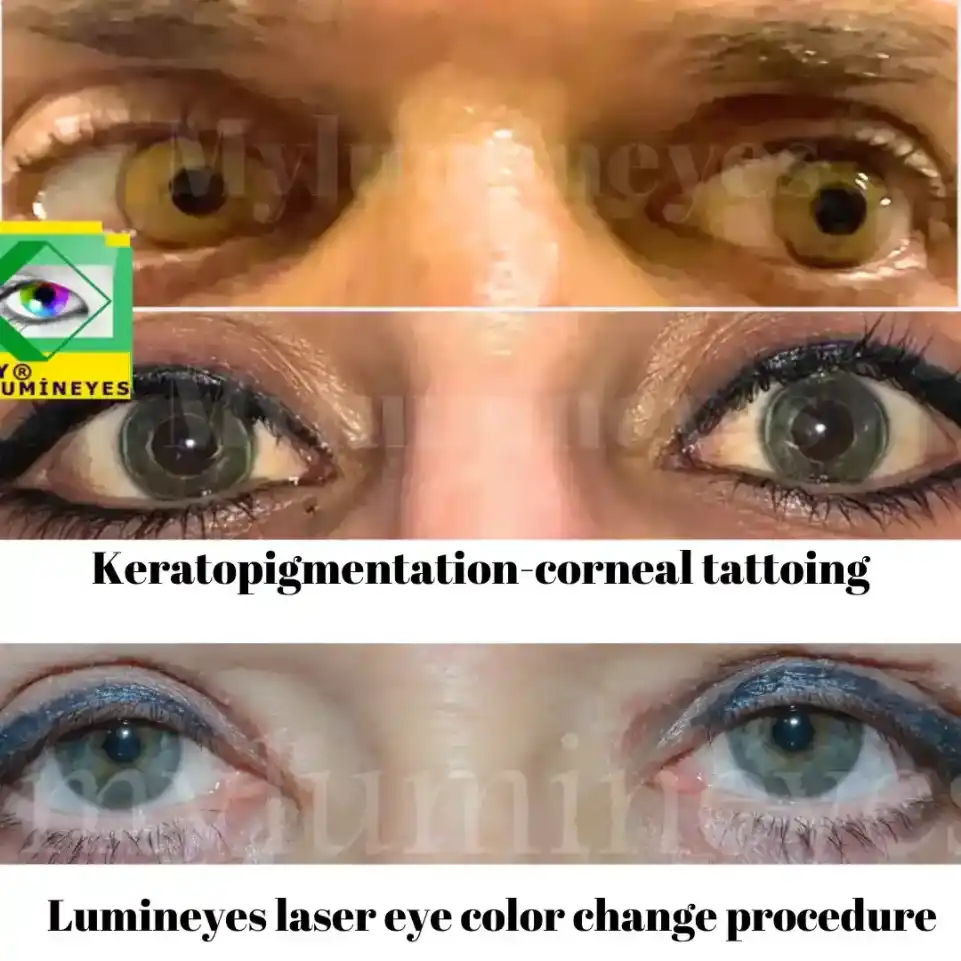
Can You Change Eye Color?
Would it be possible to get your brown eyes to turn into a more beautiful color like blue, green, gray, or hazel? Indeed, several treatments can give you the color of eyes you’ve always wanted. An often-stated cosmetic goal is to change the color of the eyes. But iris-targeted laser surgery now has the possibility of permanently changing the color of the eyes. The body will expel the irritating and removed pigments through the trabeculum and blood vessels. Note that this method only works with Lumineyes.
Laser treatments to the iris cause pigments to enter the aqueous humor, therefore permanently lightening the color of the iris.
Still, the Lumineyes method for changing eye color is a safe and successful type of intervention. Our newly developed Lumineyes Xtra offers a more effective eye color change and boasts over 99% safety compared to its predecessor.
Still, there are more ways to change the color of your eyes. Many people want the rarest eye color since they are unhappy with the gifts of nature.
Brown-eyed people desire blue eyes, while blue-eyed people seek darker eyes.
New surgical techniques tend to affect the hue of the eyes.
One cannot know how these treatments evolved without actually looking back. They entail adding color to the stroma or epithelium or even replacing the entire natural iris with an artificial one that is appropriately colored. Most importantly, people can use a certain kind of laser to change the color of their eyes.
How Can You Change Eye Color? – How to change eye color?
1. Lumineyes Laser
How can you change your eye color using a laser? Using a laser called the Mylumineyes 8G+, a process known as “laser eye color change” reduces or eliminates the outermost layer of the pigmentation known as melanin in the iris. If everything goes well on your first visit and you believe you qualify for treatment, you will have laser shots every 1 to 2 minutes. MyLumineyes® provides a non-surgical method for changing the color of your eyes.
However, only Dr. Mustafa Mete possesses the necessary qualifications to perform this operation. How can I change my eyes’ color without having surgery? Without having surgery, would it be possible to change the color of my eyes? We will use a unique laser that has a specific wavelength designed to change the color of your eyes.
The non-surgical Lumineyes laser process is the best and only natural way for people unhappy with their natural eye color to change it.
The “Mylumineyes” technique selects pigments using the most advanced laser available. This laser respects eye tissues. That is why, contrary to common knowledge on the internet, it has almost no side effects. The procedure of laser-induced eye color change produces natural, healthy, and long-lasting effects. You can safely use a laser to change the color of your eyes. Although it may seem excessively ambitious, it is indeed possible!
Moreover, Laser 8G does not hurt your eyes or cause you any discomfort throughout the laser treatment.
After the process, which takes around two minutes, you can go back to your regular schedule. This treatment lasts on average five to seven days. It is not required to prepare before the laser, but you will have to pick up your prescription afterwards. The color initially shows in Grades 1–2 eyes from the first day; it takes several days or weeks for the color to brighten in dark eyes. The Lumineyes 8G laser’s biological change maintains efficiency for 4-6 months.
We would like to mention that the Lumineyes process is the only natural way to change eye color. The Lumineyes laser’s low-temperature operation produces a benign reduction. This approach results in a blue, green, or gray tint due to the loss of brown pigments. Moreover, this instructional article offers directions on how to use the Lumineyes laser to change brown eyes into the most beautiful hazel, blue, and green eye colors.
2. Keratopigmentation eye surgery
How to change eye color with keratopigmentation? Keratopigmentation, or dyeing the cornea, is a more aggressive method than laser surgery for changing eye color. Usually, it is transient and irreversible. There has to be compatibility between these pigments and eyes. There are risky situations occasionally. Three decades ago, its cosmetic application was to improve the appearance of blind eyes. The Lumineyes laser procedure for changing eye color is quite new. Iris depigmentation is the procedure of burning the melanin, the pigmentation of the iris, with a laser. If all goes smoothly, the damaged pigment enters the eye’s aqueous humor and undergoes removal.
This treatment theoretically removes the pigment that gives eyes their color, therefore allowing them to become lighter.
However, it cannot be used to acquire a certain color, for instance. Maybe a bolder person will decide to change their eye color permanently using keratopigmentation. This technique involves injecting ink into the iris to create a type of tattoo. How does keratopigmentation affect your eyes?
A femtosecond laser facilitates keratopigmentation. Still, this is not a non-surgical choice like Lumineyes. This surgery involves incising the cornea, which carries numerous risks. There are two steps to this process. The colors applied in the corneal tattoo have lifetime quality. Many years ago, people used corneal tattooing to cure corneal opacities or other issues that compromised their appearance. Let us examine how this technique changes the color of the eyes. However, there are additional risks and misleading outcomes associated with this technique.
3. Iris color change surgery
One more way to change eye color is with iris implant surgery. What is the procedure for changing eye color using iris implants? An iris implant is the procedure of implanting a silicone lens on the iris, the layer that gives the eye its color. The ophthalmological society usually advises against any iris implant for cosmetic purposes until trials and research demonstrate better regulation of these procedures to prevent any danger or difficulty affecting our vision. Our center has removed numerous artificial iris implants. Every patient who came in had mild to serious permanent vision loss. Right now there isn’t a safe eye implant on the market, so you shouldn’t try this method.
Please pay attention. Having iris implant surgery to change the color of your eyes puts your health seriously at risk.
This operation, like keratopigmentation, is considered aesthetically unpleasing and only produces artificial eye color. Contrary to popular belief, we have been using this approach since ancient times.
In the past, we used it to treat post-traumatic or congenital iris damage. Initially designed for medical purposes, these implants are now unfortunately used to change the color of your eyes.
Consultation
Schedule a consultation with our certified laser eye color change specialist.

4. Colored contact lenses
You may change the color of your eyes by using colored contact lenses. Whether you pick a corrective or fun lens, you should always fully wash your hands and follow hygiene requirements. Using contact lenses to change the color of your eyes is both affordable and risk-free. Nearly all of the major producers of contact lenses provide color variants in a broad spectrum of very natural tones, including hazel, green, blue, and other hues.
Please select the option that most appeals to you, and then proceed. The use of contact lenses is evidently associated with several hazards and adverse consequences. Various colored contact lenses are available for the purpose of correcting both nearsightedness and farsightedness. If, on the other hand, you merely want to wear colored contact lenses for cosmetic purposes, the best alternative is to utilize non-prescription colored contact lenses.
5. How to change eye color at home?
How can you change your eye color at home? Your eye color won’t really change at home; that is certain. You can’t change your eye color at home, no matter what you’ve heard. This guide covers diets, subconscious approaches, drops affecting eye color, and more. We must note that it will be clear that the only natural way to change your eye color is with a Lumineyes laser.
6. Drops or foods related to the changes in eye color
Avoid DIY remedies like putting honey in your eyes; it doesn’t help! This is a horrible myth; if you believe it, you can unwittingly let the bacteria in honey into your eyes and risk major diseases. Food does not have a direct effect on the color of your eyes. Can one naturally change the hue of their eyes by eating some homemade foods? No! Like with skin and hair colors, people inherit their eye color.
A permanent change without the use of a laser or surgery calls for changes in the genetic code or cell structure.
You cannot, therefore, do this at home with food, diet, or purportedly changing-eye-color eye drops. We all have the same eye color throughout our lives, which matures during childhood. But some people find that as they get older, their eyes naturally get darker or lighter. As already stated, melanin pigment primarily determines eye color. Although certain factors can cause eye color to change permanently, melanin levels typically remain consistent throughout a person’s life. Among the disorders that can influence eye color are pigmentary glaucoma, heterochromia, and multicolored eyes.
Benefits of Lumineyes
100% Non-surgical
Natural-looking result
No lenses or implants
Safe for long-term vision health
Backed by 13+ years of clinical expertise
Post-Procedure Care
Aftercare includes eye drops, resting, and follow-up appointments to monitor healing.

Frequently Asked Questions About Laser Eye Color Change
Is it possible to naturally change your eye color using laser technology?
Yes, the Lumineyes method allows natural-looking eye color change without surgery. The laser removes melanin gradually, revealing lighter tones like blue or green.
Is laser treatment for changing eye color FDA approved or medically approved?
Licensed ophthalmologists perform the Lumineyes method, which, although not FDA-approved in the US, is medically safe based on clinical experience.
What are the most common eye colors that lasers achieve?
With laser, dark brown eyes can be safely lightened to blue, green, gray, or hazel tones, depending on your genetics and response to the sessions.
How many laser sessions are required to change eye color?
We typically recommend 10 sessions for full results. Each session is non-invasive and customized to the patient’s iris structure.
Does the procedure for changing eye color with lasers affect your vision or eye health?
No. If performed by professionals like Dr. Mustafa Mete, the Lumineyes procedure does not harm vision. It is non-invasive and clinically safe.
Is My Lumineyes better than other methods for changing eye color?
Yes. Lumineyes is non-surgical, does not use implants or dyes, and provides natural results. It is considered safer than iris implants or keratopigmentation.
What is the success rate of laser eye color change surgery?
With over 16,000 procedures performed, the Lumineyes method has shown high success and satisfaction rates among patients worldwide.
Trusted Information
American Academy of Ophthalmology—Eye Health Info
Learn the risks of implant-based eye color surgery
Ready to Change Your Eyes?
Contact Dr. Mete’s clinic today to find out if you qualify for the Lumineyes laser treatment. The future of natural eye color transformation is here — and it’s safe.

 100% Non-surgical
100% Non-surgical